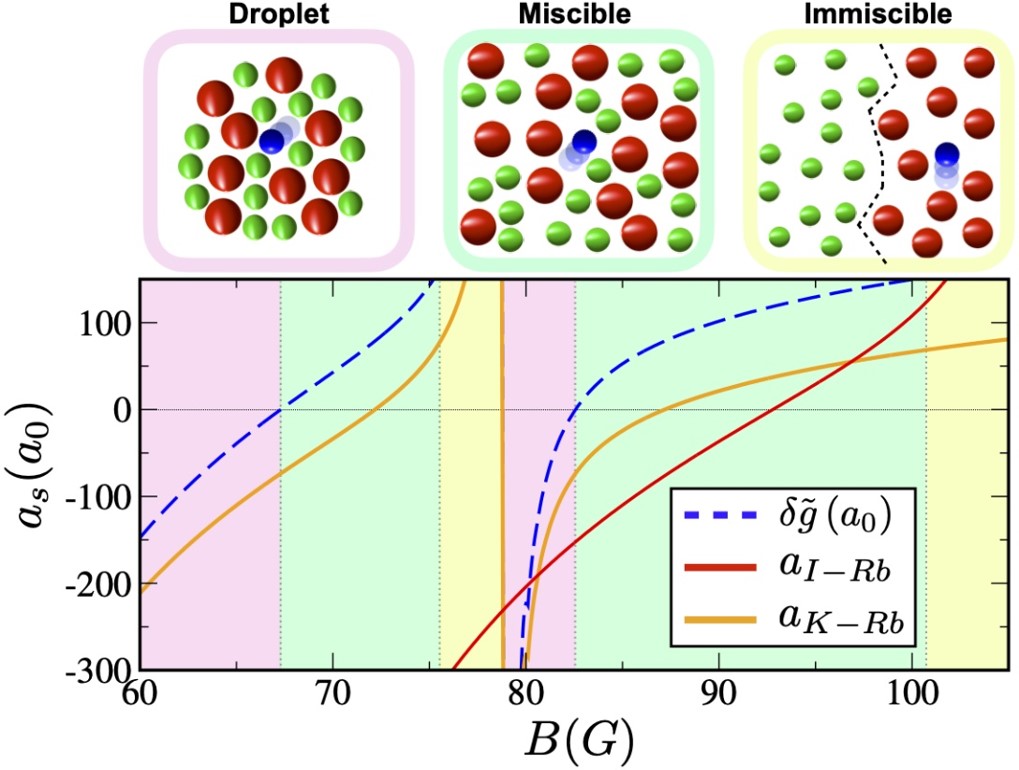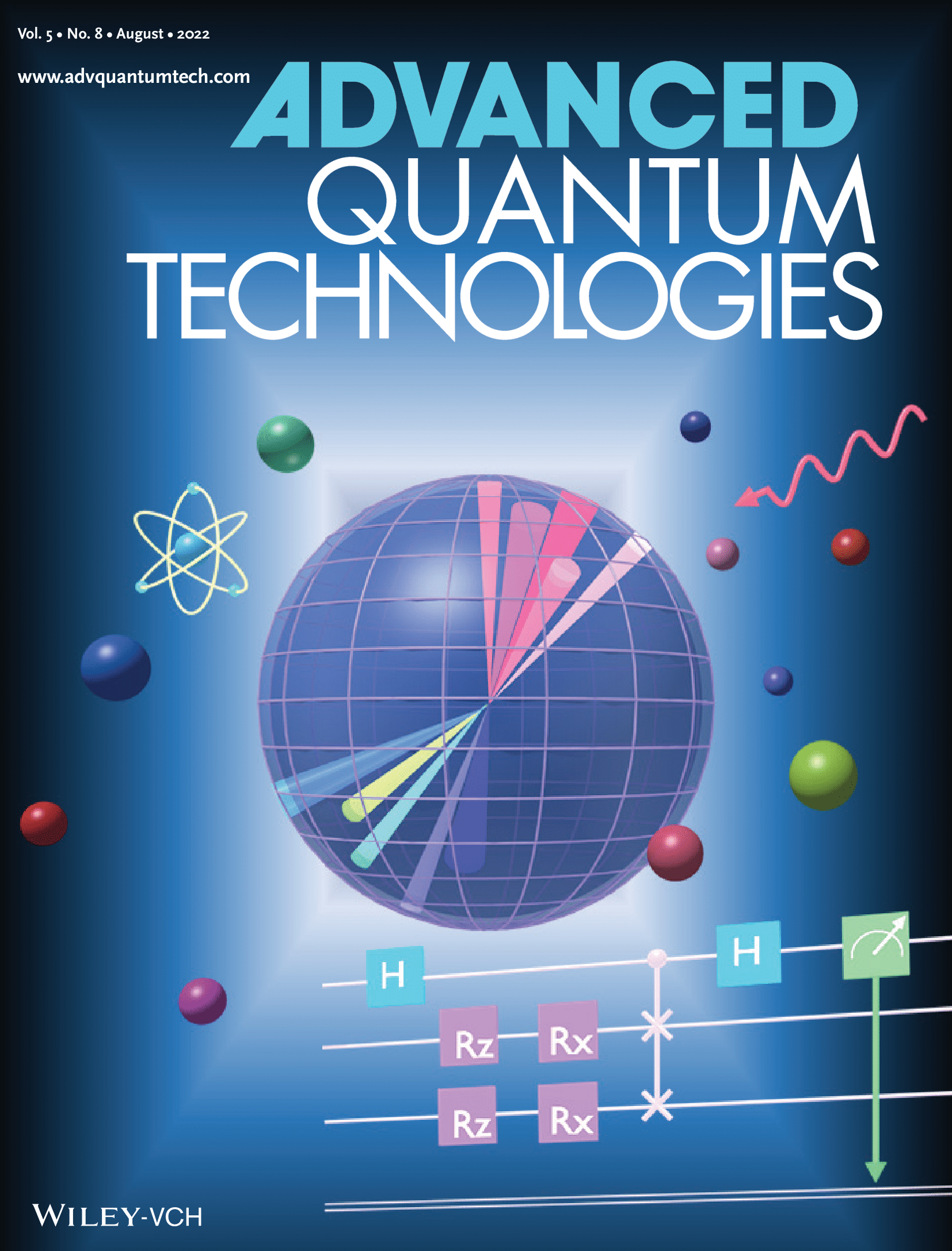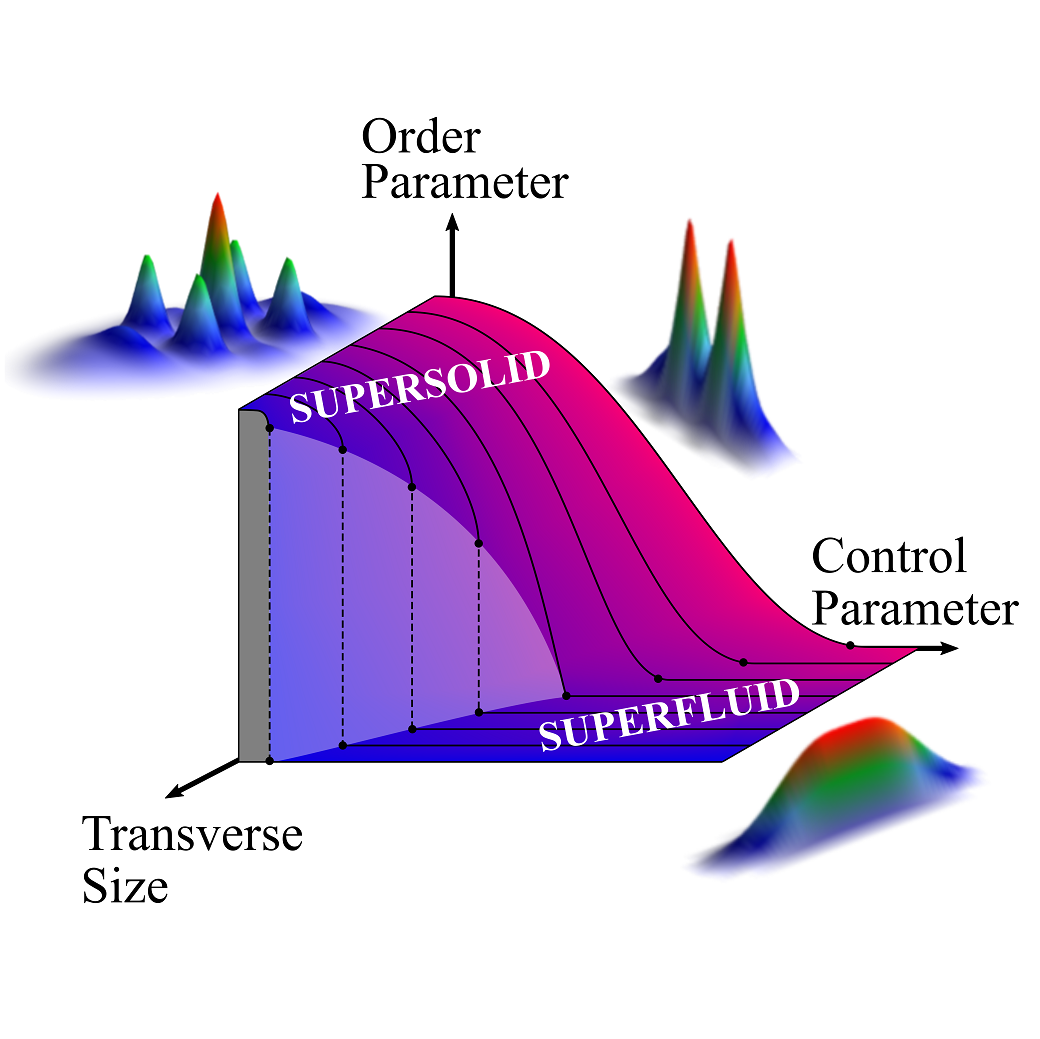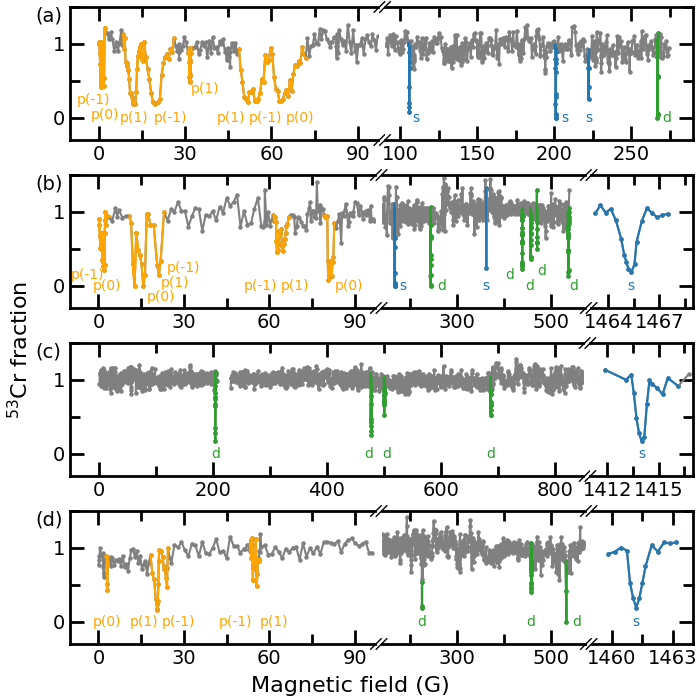 |
Together with Giacomo Bighin and Tommaso Macrì, we studied the problem of a mobile impurity immersed in a bosonic mixture. We focused on the experimental relevant case of a 41K−87Rb mixture, prepared in its ground-state, with the impurity consisting of a few 41K atoms in the second-lowest hyperfine state. We provided a compressive picture of the impurity across the mixture phase diagram. In the droplet phase, under realistic experimental conditions, we found exotic bound-states where the impurity localized either at the center or at the droplet surface. Our findings provide new insights for the study and detection of Bose polarons in collisionally stable and long-lived Bose mixtures such as the 41K-87Rb one. G. Bighin et al. |
LAST NEWS
 |
A quantum embedding is a map that can be trained to separate and embed classical data points into a much larger Hilbert space. In the case of binary classification problems, this quantum protocol achieves a geometrical representation of the data in which they are easier to be classified. In the era of big data, this algorithm can provide a remarkable simplification of the intensive preprocessing often necessary for Machine Learning algorithms to perform efficiently. We have developed an extensive experimental study of quantum embedding by implementing a parametrized quantum circuit on two complementary experimental platforms: atomic and photonic. We have compared the results with a similar analysis conducted on the cloud-available Rigetti superconducting quantum processor. The successful results support the promising idea of hybrid quantum technologies for future Quantum Machine Learning applications. (Front cover on Adv. Quantum Technol. Volume 5, Issue 8, August 2022) I. Gianani, et al., |
 |
The supersolid is a long-sought quantum phase of matter combining properties of superfluids and crystals, finally discovered in quantum gases of magnetic atoms. The experiments usually cross a quantum phase transition from a homogeneous superfluid to the density-modulated supersolid. But very little is known about this novel type of phase transition. Here, we find experimentally and theoretically that the superfluid-to-supersolid quantum phase transition resembles ordinary crystallization transitions but with important novelties due to the peculiar ways in which supersolids are different from superfluids and solids. We see evidence of two types of transitions, continuous and discontinuous, which can be linked to the second- and first-order phase transitions expected for 1D and 2D systems, respectively. Interestingly, we find that the dimensionality of a supersolid depends not only on the underlying lattice structure but also on the structure of the density background that provides phase coherence among lattice sites. Our analysis provides a general framework based on Landau theory—a general theory of phase transitions—which allows us to reconcile previous results in the field. The continuous transitions we find provide access to excitation-free supersolids, which can be employed to study fundamental phenomena such as superfluidity and entanglement in this new state of matter.
G. Biagioni, et al. |
 |
A scientific workshop to discuss the most recent advancements in the context of ultracold atom physics and related fields. Experimental and theoretical groups from Palaiseau (France) and Florence (Italy) research areas will present their activities and discuss collaborations in topics ranging from metrology and entanglement to quantum transport and simulation.
The scientific program and all the information for attendance can be found on the workshop website |
 |
Our preprint on ultracold collisions in 6Li-53Cr mixtures is now on the arXiv! We have performed extensive Feshbach spectroscopy of various spin combinations revealing more than 50 resonances between 0 and 1500 G. By means of a full coupled-channel model, we have unambiguously assigned a complete set of quantum numbers to each resonance and derived a thorough characterization of the scattering properties of our system. This has enabled us to identify several resonances suitable for future few-body and many-body studies of mass-imbalanced Fermi mixtures. What is more, our work paves the way to the production of a new class of ultracold molecules possessing both electric and magnetic dipole moments. Stay tuned! A. Ciamei et al. |
